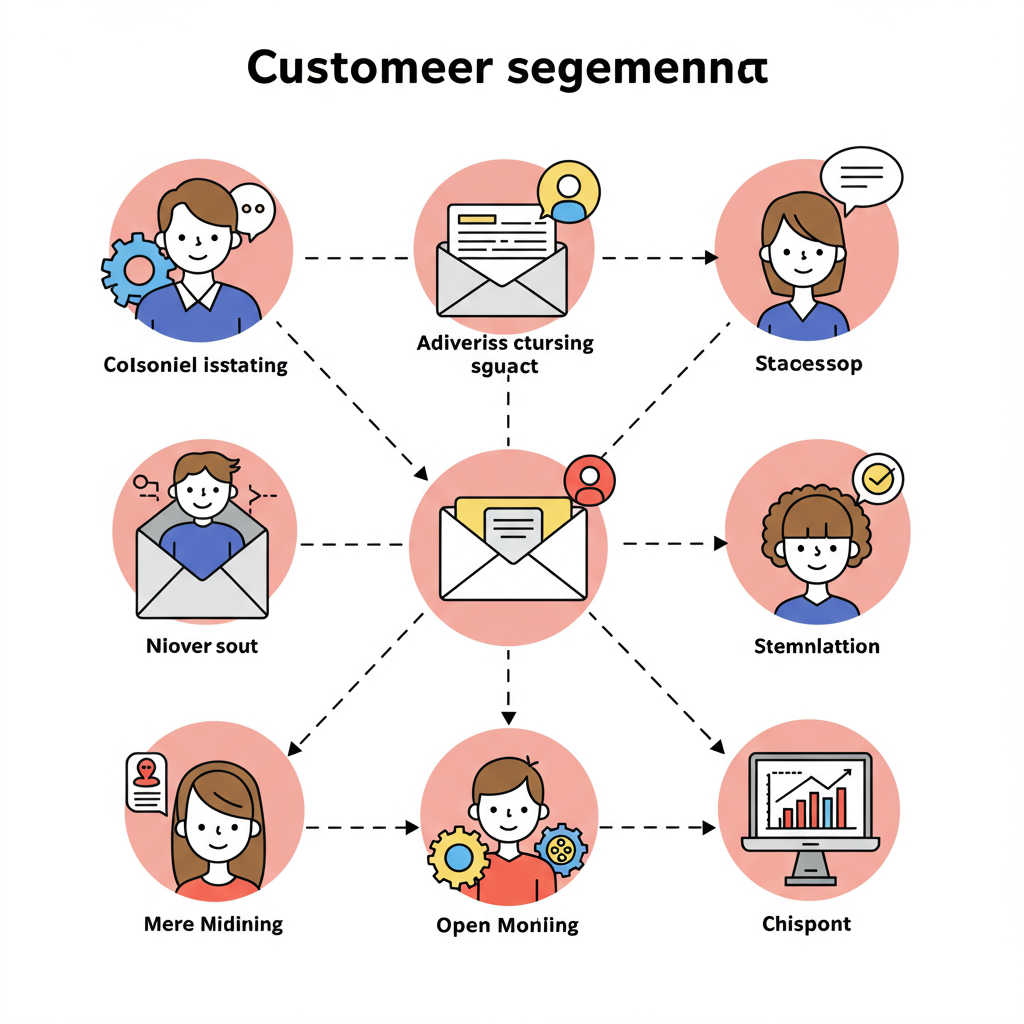Transform your email marketing from generic blasts to personalized conversations that drive real sales for your e-commerce store.
As a Shopify merchant, you’re constantly looking for ways to connect with your customers and drive more sales. One of the most powerful, yet often underutilized, tools in your arsenal is email marketing. But simply sending out generic newsletters to your entire list isn’t enough anymore.
In today’s competitive e-commerce landscape, personalization is key. That’s where email list segmentation comes into play, and it’s a game-changer for your Shopify store.
I’m here to guide you through the ins and outs of effective email list segmentation, showing you how to transform your email marketing from a broad shout into a targeted conversation.
So, what exactly is email list segmentation? Simply put, it’s the process of dividing your email subscribers into smaller groups, or segments, based on shared characteristics, behaviors, or preferences.
Instead of a one-size-fits-all approach, you’re creating tailored messages that resonate deeply with specific customer groups. This leads to much higher engagement and, ultimately, more conversions for your Shopify business.
The benefits of segmentation are truly compelling. When you send relevant content, you’ll see significantly higher open rates and click-through rates.
Customers appreciate receiving emails that are pertinent to their interests, which in turn builds stronger relationships and fosters loyalty.
This also leads to fewer unsubscribes and spam complaints, improving your sender reputation and ensuring your emails actually land in the inbox.
Most importantly, segmented campaigns consistently outperform unsegmented ones in terms of conversion rates and revenue generated. It’s about sending the right message to the right person at the right time.
Now, let’s dive into the types of segmentation that are most effective for Shopify merchants. While demographic and geographic segmentation can be useful, behavioral segmentation is where the real magic happens for e-commerce.
**Purchase History:** This is perhaps the most powerful segment for a Shopify store. You can segment customers based on whether they are first-time buyers, repeat customers, high-value purchasers, or even those who bought a specific product category.
Imagine sending a “thank you” email with a discount on their next purchase to first-time buyers, or exclusive early access to new collections for your VIP repeat customers.
**Website Activity:** Your customers’ browsing behavior on your Shopify store provides a wealth of data. Think about segments for those who viewed specific products or collections but didn’t buy.
Abandoned cart reminders are a classic example of highly effective behavioral segmentation based on website activity. You can also target those who visited your “About Us” page versus those who only looked at product pages.
**Email Engagement:** How your subscribers interact with your emails tells you a lot. You can segment based on those who frequently open and click, those who rarely engage, or even those who haven’t opened an email in a while.
This allows you to re-engage inactive subscribers with special offers or send exclusive content to your most engaged audience.
**Customer Lifecycle Stage:** Every customer moves through different stages with your brand. You can segment new subscribers, active customers, at-risk customers (those whose purchase frequency has dropped), and lapsed customers.
Each stage requires a different communication strategy, from welcome series for new sign-ups to win-back campaigns for those who haven’t purchased recently.
**Product Preferences:** Based on past purchases or even products added to wishlists, you can infer product preferences. This allows you to recommend complementary products or announce new arrivals in categories they’ve shown interest in.
**Source of Acquisition:** Knowing how a customer joined your list (e.g., through a specific ad campaign, a blog post, or an in-store sign-up) can help you tailor your initial messaging.
Implementing segmentation effectively on Shopify usually requires a robust email marketing platform integrated with your store, such as Klaviyo, Mailchimp, Omnisend, or others. While Shopify’s native customer groups offer basic filtering, these dedicated platforms provide the advanced segmentation capabilities you need.
They allow you to set up automated flows and campaigns for each segment, ensuring your messages are always timely and relevant.
My advice is to start simple. Begin with one or two key segments, like “first-time buyers” and “abandoned carts,” and then gradually add more complexity as you see results and gather more data.
Always test your segmented campaigns against your unsegmented ones to measure the impact. A/B testing different subject lines, content, and offers for each segment will help you refine your strategy.
Remember, the goal isn’t just to send more emails, but to send *better* emails. Segmentation empowers you to do just that, fostering deeper connections and driving significant growth for your Shopify store.
What are your thoughts on email list segmentation for Shopify merchants? Have you tried it, and what results have you seen? I’d love to hear your perspective.
In conclusion, email list segmentation is no longer a luxury; it’s a necessity for any Shopify merchant serious about maximizing their email marketing ROI.
By understanding your customers better and speaking directly to their needs and behaviors, you’ll unlock a level of engagement and conversion that generic emails simply cannot achieve.
Start segmenting today, and watch your Shopify sales soar!






